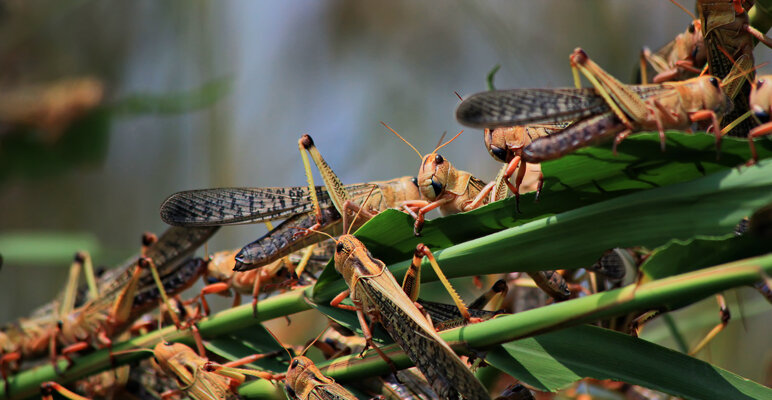Desert locust control area to rise 4-fold next year: forecast

TEHRAN – The desert locust is expected to penetrate into more than 80,000 hectares of land over the next [Iranian calendar] year (beginning on March 21), a 4-fold rise compared to the current year, deputy head of Plant Protection Organization, said.
In the current year, 19,300 hectares of lands were haunted by desert locusts, and control measures prevented the pest to enter farms and gardens, IRNA quoted Saeed Moein-Namini as saying on Monday.
Next year, the whole province of Hormozgan, parts of Bushehr and Sistan-Baluchestan provinces, will be at the forefront of the battle against locusts, he noted.
Desert locust is expected to penetrate into over 80,000 hectares of lands.In the next stage, the measures will take place in the southern parts of Fars province, southern parts of Kerman, and the central parts of Sistan-Baluchestan.
According to Moein-Namini, if we see a lot of cyclones, the volume of locusts will increase and it will cover all the provinces of Khuzestan, Fars, and Bushehr.
In 2019, the locust infestation was recorded by the National Plant Protection Organization in nearly one million hectares of the southern provinces of the country.
FAO explains that desert locust infestations are normally present in southeast Iran during the spring. Local breeding coincides with seasonal rains that often occur from about February or March until April or May. In warmer years, rains that occur during the winter can lead to late winter and early spring breeding.
By June, vegetation is usually dry again and any adults that were produced during the spring move east towards the Indo-Pakistan summer breeding areas. Most of the spring breeding occurs along a 450 km stretch of coastal plains on the Arabian Sea from Jask (Hormozgan) and the Strait of Hormuz and the Gulf of Oman in the west to Chabahar and Gwadar (Sistan-Baluchestan) near the Pakistan border in the east.
The most important area along the coast is the Vashnum Plains near Chabahar. If rains fall and temperatures are warm, breeding may also occur in the interior, namely the Jaz Murian Basin from Kahnuj to Iranshahr, and in the Zaboli, Suran, and Saravan valleys that lead to Panjgur, Pakistan. Desert Locust adults rarely cross the mountains to the north of these areas.
FB/MG
